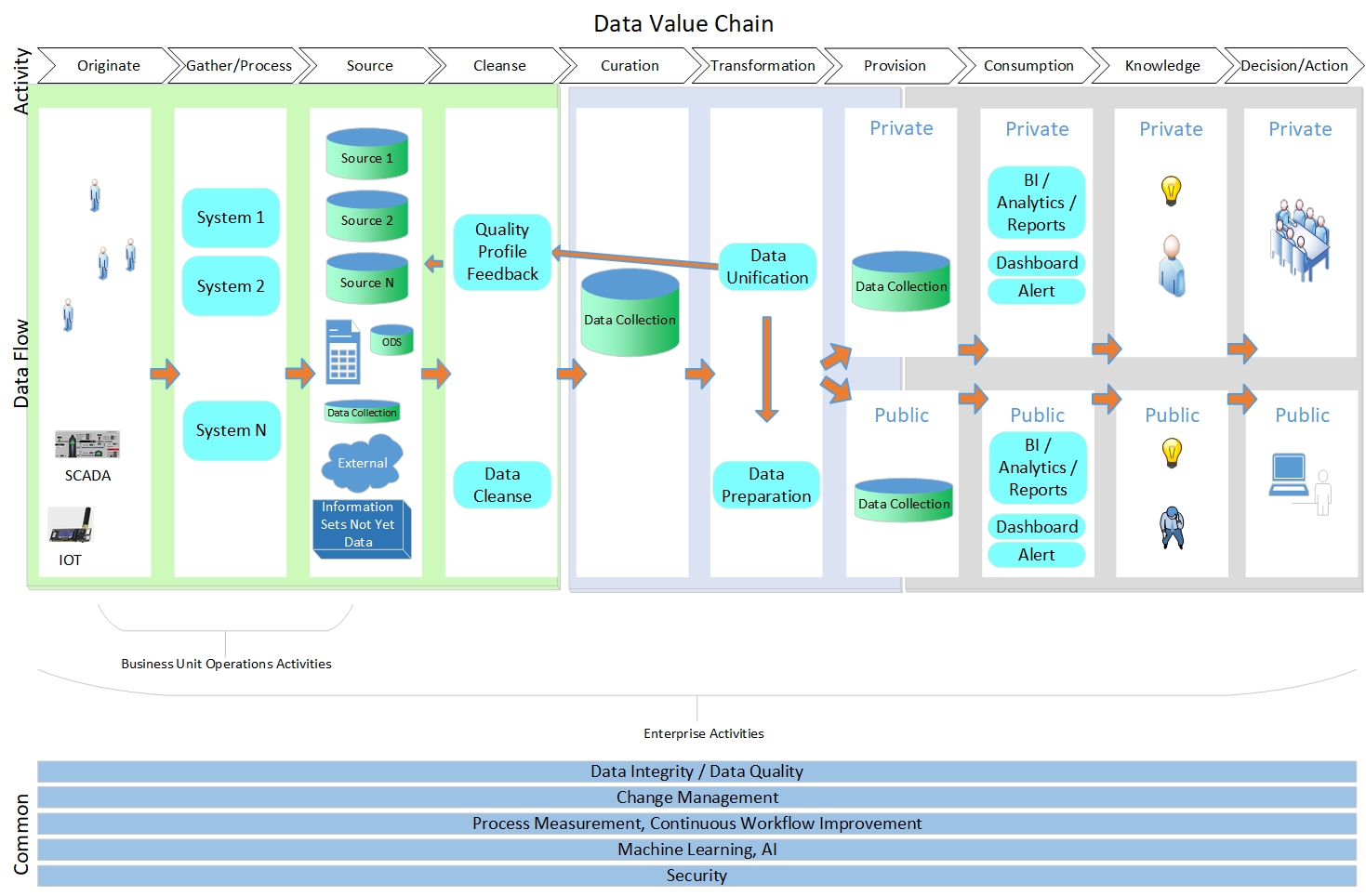By Larry Danberger August 31, 2017
‘Data Management’ is a term often used with very different meaning within an organization. Examples include: to describe someone that receives a call and updates customer information; a team that provides data to automated systems; or a person working with the Enterprise Architect to design data usage.
The diagram below illustrates the usual functions within an organization, and where data management may be found. Identifying this within your organization will help reduce confusion, identify overlap of responsibilities, and help optimize the approach to data management.

Data Value Chain
https://www.nubium.com/publicdownload/datavaluechain.pdf
Activity Description
Originate
Data of interest is created or identified. This data will become part of core applications within the organization.
Gather/Process
Data of interest is gathered and stored within a system, with related processing for each LOB area of interest. These systems include automated software systems; manual software systems such as excel spreadsheets; and manual systems such as paper document filing.
Source
Results of the Gather/Process activity are retained in databases, excel spreadsheets, document management systems, or through other persistence means. Additional data sources for data not originating from LOB Gather/Process activity are identified and linked and/or imported. Other potential sources of data such as the results of scanning/converting unstructured data may also be included. Operational Data Store (ODS) may be utilized and receive updates from cleanse process.
Cleanse
An automated system continually providing data that has been cleansed as defined by the related business and quality rules, to data collection (ODS, warehouse, data lake, data mart, etc.) storage.
Cleanse – Data Quality Feedback
An automated system continually profiling data sources based on identified business and quality rules, and providing feedback (email, log file updates etc.) to source owners.
Curation
All enterprise data of potential interest is maintained in a system available for automated transformation.
Transformation
A system that provides the automated ability to perform data unification and preparation of enterprise data (from Curation) for preparing data into usable private and public data collections. Transformation to an entity happens once.
Provision – Private
An automated system continually providing grouping/processing of data into purpose defined collections for private use. May contain confidential data obtained from external companies. Provision of an entity can happen multiple times.
Provision – Public
An automated system continually providing grouping/processing of data into purpose defined collections for public use. Will not contain confidential data obtained from external companies. Provision of an entity can happen multiple times.
Consumption
Systems that provide the ability to generate or review data (from Provision) and data summaries in various styles including BI tools, data visualization efforts, dashboards etc. May include private information for internal consumers.
Knowledge
Manual activity of gaining knowledge through the use of the provided consumption systems, possible future systems could support recording, sharing, and reproducing how data was extracted at later dates.
Decision/Action
The end desired outcome of making decisions using the provisioned data. Possible future systems could support recording, sharing, and reproducing how data was extracted and utilized, what decisions were made, etc.

